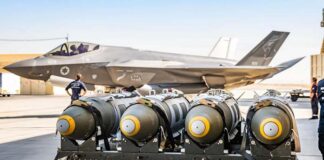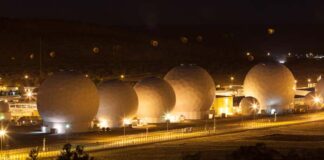Communist Party activists on the sugar cane fields managed to unite workers across racial divisions, defying union officials and a Labor state government, writes Tom Orsag
In August 1935, 2000 sugar cane cutters and mill hands in North Queensland struck for nine weeks. They demanded that cane be burnt before cutting to prevent the outbreak of Weil’s disease. The strike was immortalised in Jean Devanny’s novel Sugar Heaven.
A form of plague spread by rats, the disease had stricken hundreds of cane cutters working in the canefields of North Queensland. Some died as a result.
The workers had to take on the Colonial Sugar Refinery (today’s CSR), a hostile state Labor government and their own Australian Workers Union (AWU) officials.
The strike was led by socialists who were members of the Communist Party of Australia (CPA). They had built up a network of militants in the union as part of the Militant Minority Movement (MM) that could defy the AWU leaders.
The CPA’s politics were deeply flawed by its support for Stalin. But in Depression-era Australia it attracted workers who want to fight the ravages of capitalism.
The AWU was one of the most conservative and bureaucratic unions and the backbone of the right of the Labor Party. It was tied to the state Labor government and a strong supporter of the White Australia Policy.
In the sugar industry of the 1930s, the victims of the White Australia Policy were Italians and other non-English speaking migrants.
Between 1921 and 1930 around 24,000 Italians arrived in Queensland, most of whom settled in the North. The sugar industry bosses consciously brought in migrant labour with the aim of dividing the workforce using racism and thereby undermining trade unions.
During the 1911 sugar strike, a CSR national general manager wrote to one Queensland mill manager that the presence of Italian migrant workers was, “undoubtedly the stumbling block with the unions in preventing them from forcing their demands on the farmers.”
The AWU officials played along with the racism opposing Italian migration and called on the State government to exclude Italian migrants from the cane fields. A “gentleman’s agreement” was made between the AWU and the sugar employers to ensure 75 per cent of workers were “British”. This was known as the “British preference”.
The CPA argued that the union’s commitment to the White Australia Policy made the position of sugar workers worse and it denounced the ‘British preference’ as racist.
Migrant workers were being “blamed for the capitalists’ attacks,” it argued, “but our [union] leaders make no attempt to organise us for struggle against our common enemy – the capitalists.”
There was a graphic example of this during the strike in Ayr in the 1932 and 1933 crushing seasons.
AWU officials told canecutters that it was the foreign-born workers who were responsible for the worsening conditions.
But as Red Leader, the paper of the Militant Minority Movement (MM) pointed out, “Whilst our ranks were divided by racial prejudice, the Arbitration Court was sitting, and in one of their customary bursts of fair pay reduced the wages of all workers, British and foreign-born alike.”
The anti-racism of CPA was crucial to building its credibility among both Italian and Australian workers.
CP activists also took up workplace issues and revitalised the union.
The MM branch at Mourlyan mill was started by mill hand Carl King.
One of the first strikes King led was over the seemingly trivial demand that management supply soap for the workers to wash their hands.
The MM there soon became big enough to produce a monthly bulletin in English and Italian.
In Ayr, the MM, led by communist Doug Olive, got the union functioning again.
At the same time, the CP built support in the wider community. A Mourilyan widow, threatened with eviction by the Labor-controlled council, sought King’s support.
After tearing down the notice on her house, which stated it would be sold for back rates, he called a public meeting over the issue. The council was forced to grant the woman free rates for the rest of her life.
The MM network grew. From 1934, it organised a number of small successful strikes.
That year it called its first annual conference in Innisfail. There were 34 delegates, “from practically every sugar area in North Queensland, including representatives of an Italian and two Yugoslav worker’s clubs.”
Burning the cane
In the summers of 1933 and 1934, rat plagues hit Ingham. With them came Weil’s disease.
A local doctor and the Commonwealth Health Laboratory recommended burning cane to stop the disease spreading.
The cane bosses opposed burning because it reduced the sugar content, reducing their profits.
After 18 years without any union meetings, CP activists in Ingham called meetings on the issue. The result was a strike of 1500 men from the Ingham canefields.
The Queensland Labor government reacted immediately, sending armed police to force them back to work. Strikers were arrested and fired upon by police.
The AWU officials tried to end the strike. But the dispute was controlled by the rank and file committees set up to cover the different mill areas.
The strikers forced the Arbitration Court to order cane in the Ingham area be burnt. Strike action then led to cane being burnt in the Mourilyan, South Johnstone and Goondi mill areas.
AWU leaders tried to claim the credit. But a letter from Goondi mill management to CSR head office stated the AWU, “were completely flouted in this strike and were altogether incapable of controlling their members.”
The CP’s anti-racist work bore fruit. At strike meetings there were always two chairs, one English and one Italian.
At Mourilyan nearly all the canecutters were non-English speaking migrants, while the majority of mill hands were Anglo-Saxon. Yet the mill workers immediately ceased work in support of the cutters.
By the end of 1934, though, the employers had managed to get the burning order revoked in all areas except Ingham.
A week before the start of the Mourilyan season, Carl King called a meeting of all sugar workers over Weil’s disease.
Three hundred cutters and mill hands elected a committee to organise a campaign for a burning order.
They approached the AWU leaders who refused to defy the Arbitration Court.
The rank and file went ahead and organised a strike themselves.
On 4 August, 300 cutters at Mourilyan struck, followed a week later by 800 cutters and mill hands at Tully.
By mid-August, Goodni and South Johnstone were out and the four mills lay idle.
The AWU officials’ stance cost them the support of many workers.
Goodni mill management wrote, “What is known as the ‘Rank and File Movement’ is running the whole business and as usual the AWU officials are just ignored.”
CP members made sure the workers themselves were involved in running the dispute. Strike committees called a public meeting in Innisfail, which elected a Relief Committee to raise funds.
Collinsville miners sent £100 and Mossman cane cutters donated £75 every fortnight during the dispute.
The Relief Committee established kitchens to serve meals to striking workers.
Women were also drawn into supporting the strike, organising sports days and dances to raise funds and keep morale high.
AWU members crewing sugar ships passed resolutions supporting the striking sugar workers.
The AWU was unable to call the strike off. It had to resort to dirty tricks to undermine it with secret ballots and scabbing.
It fostered divisions between cutters and mill workers, and between workers in different areas. Official Clarrie Fallon said the AWU did not sanction the strikes.
This was a green light to the Queensland Labor government to aid the sugar bosses. In late August 1935, the Townsville Chamber of Commerce asked Labor Premier William Forgan Smith to intervene. He sent up to 150 armed police from Brisbane. They were used to evict cutters from their barracks and escort scabs into the sugar mills.
In September, Premier Smith rushed through a law to make in an offence to “induce” or “incite” anyone to take part in an “illegal” strike and imposed a £100 fine for doing so.
After nine weeks on strike, the combined scheming of the AWU and the Labor government began to work.
The Labor government ordered a secret ballot, held simultaneously in different mill areas to keep the strikers separated. The AWU got their desired result.
The strike began to crumble. The strike committee leaders felt they had to recommend a return to work to limit victimisation.
Although the strike was defeated, in the long run it succeeded in getting cane burnt before cutting.
In June 1936, Weil’s disease broke out again. In July, a general order for the burning of cane was handed down by the Arbitration Court.
The sugar bosses feared that the enduring rank and file organisation built by the CP would lead to a repeat of the 1935 strike.
The CP grew dramatically in north Queensland as a result of the strike. In 1931, there were about 40 members in the region.
By 1938, the CP had 600 members with a branch in almost every town from Mackay to Cooktown to Mt Isa.
In that year 7500 copies of the CP paper, Workers Weekly, were sold and the local North Queensland Guardian was going into one in every eight homes.
The work of Communist Party activists on the sugar cane fields shows how opposition to racism is necessary to strengthen workers’ struggles against bosses’ efforts to divide and rule. Their success showed the potential to build rank-and-file workers’ organisation and to stand up to conservative union officials, police and even Labor governments.





